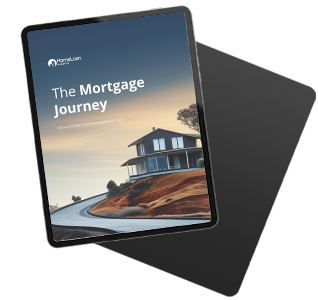Are you ready for a home loan?
Not everyone we speak to is ready or able to buy a property right away.
This page is a guide for increase your chances of approval or qualifying for a better discount when the time is right.
With the lockdown in full effect, and widespread adoption of social distancing measures, here is how you can apply and get approved for a home loan amidst the coronavirus pandemic.
We know how the banks are looking for in an application!
Step 1: Basic lending rules
If you meet the lending criteria of most major banks, you will be able to apply for the cheapest home loan on the market. So what do you need, in order to get approval?
- Employment: Ideally all applicants should be in their current job for a minimum of 6 months. For casual and contract employees, many lenders require 12 months and for self employed 2 years. There are some exceptions to these rules for strong applicants.
- Credit history: Lenders look very closely at your credit file and rarely approve loans over 80% LVR, for people with a bad credit file. Get a free copy of your credit file, pay off any debts you have outstanding and avoid applying for too many personal loans and credit cards 12 months prior to applying for your home loan.
- Deposit size: The larger your deposit, the lower the risk to the lender. Lenders consider loans for 80% of the value of the property to be “safe”. For this reason, they are far more likely to make an exception to their normal lending policy if you have a large deposit and only need to borrow 80%. If you borrow over 80% then the lender will charge you a once off fee known as Lenders Mortgage Insurance and will also be very strict when assessing your loan.
- Genuine savings: Most lenders need to see some form of genuine savings! Lenders know that people who have saved more than 5% of the purchase price in a savings account, shares or term deposit, are far more likely to pay back a home loan than people who have no savings. Put all of your spare funds into a separate savings account and keep making regular contributions. There are some exceptions to this policy for strong applicants.
- Property type: Lenders are very conservative and prefer financing properties that are as “normal” a property as possible. This means that you are more likely to get approval if you are buying a house or unit over 50m2 internal area (excluding balconies and car spaces). Some lenders also have locations restrictions and only lend to those buying in a large town or capital city. If you are looking at buying another property type, please refer to our property types page to find out how much you can borrow.
- Asset position: Lenders like to see your asset position matching your age and income. For example, a 50 year old first home buyer earning $100,000 p.a. with no assets, is likely to have their loan declined. Work on paying off all your unsecured debts, including credit cards & personal loans and try to save as much as you can!
- Payment history: If you are not paying your credit card, personal loan and rent on time, how will you manage home loan repayments!? Lenders particularly dislike people who miss repayments, even if they are just a couple of days late. Try to manage your money well and avoid being late with your repayments. Lenders may request a letter from your managing agent confirming you have paid your rent on time, or for statements from your previous loans.
- Guarantors: If you have a guarantor then you may be eligible for a 100% LVR loan now! Around 60% of first home buyers get either a gift or a guarantee from their parents to help them buy a home. This is one of the easiest ways for young people to enter the property market, so it is worth discussing this option with your family.
What if I don’t meet the above criteria? Please explain your situation on the Disqus comments section below and we’ll happily help answer your questions and let you know if there’s a lender that can help.
How can you identify possible credit issues? You can use our credit score calculator to work out which areas of your application will be identified as high risk by the banks.
How long does it take to get a home loan approved? Generally speaking, it can take between 4 to 6 weeks from submitting your application to reaching settlement depending on which state you live in.
12 Steps To Home Loan Approval And Beyond
Your Step-By-Step Roadmap From Applying For A Home Loan To Finally Moving In

Disclaimer: Over the next few days, you’ll receive additional guides to help you on your homebuying journey. Occasionally, you’ll receive carefully curated home-buying tips, offers & schemes, and news articles. You can unsubscribe any time you want. View our Privacy Policy
Step 2: Keep your documents
Lenders typically ask for a lot of information when you apply for a loan. The more information you can provide, the better your chances of getting approval. We recommend that you keep the statements for all of your loans and credit cards, as well as payslips, tax returns and anything else we have listed below.
This is a typical checklist of documents required for a home loan.
- 100 points ID: drivers license, Medicare & ATM Card.
- One recent statement for all of your debts (credit cards, personal loans etc).
- One statement received in the mail (all pages). Transaction histories printed from the internet are only acceptable if accompanied by an old statement received in the mail.
- One recent rental statement for any investment properties you own.
Purchases
- Evidence of your deposit, such as a bank statement
- If you have saved your deposit then please provide 3 months bank statements OR an internet transaction history for 3 months as well as one statement you received in the mail.
- Copy of the contract of sale (not required for pre-approval):
- NSW – Front page
- QLD – First two pages
- VIC – Particulars page
- SA – First two pages
- WA – Offer & acceptance (both pages)
- ACT – Front page
- NT – All pages
- TAS – Front page
Construction
- Either a building contract OR a formal written quote OR a tender.
- Plans (council approved OR draft)
- Specifications (often included in the quote or building contract)
Refinances
- Council rates notice for the property or properties that you are using as security.
- 6 months statements for your current home loan.
- 6 months statements received in the mail (all pages). Transaction histories printed from the internet are only acceptable if accompanied by one old statement received in the mail.
PAYG Applicants
- Your two most recent payslips.
- Last year’s group certificate (optional).
Self Employed Applicants
- 2 years personal tax returns.
- 2 years personal tax assessment notices.
- 2 years company / partnership / trust tax returns.
- 2 years financial statements (if available).
OR
- Your ABN for Low Doc / No Doc loans.
Guarantors
- 100 points ID: drivers license, Medicare & ATM card.
- Council rates notice for the property being used as security for the guarantee.
- One recent statement for any loan on that property.
Step 3: Increase the size of your deposit
The larger your deposit the cheaper your loan will be! You should aim to save a minimum of 5% of the purchase price before buying a property, and in most cases there is no need to save any more than 20% of the purchase price. Please read our guide on saving a deposit to learn why some people can save while others can’t.
The larger your deposit the less you will be charged in Lenders Mortgage Insurance (LMI). If you borrow 80% or less then you will not pay any LMI at all and some lenders may still accept your loan, even if you fall outside their normal guidelines.
The rules that the banks have for genuine savings are quite tricky. If you don’t save your money in a way that the bank will accept, then you may need to wait three additional months before they will accept your application. Please read our page on genuine savings so that you can get approved first time around!
Step 4: Ask us for advice
Our Disqus comments section has been specifically set up to allow people who need advice about their situation, but may not yet ready to apply for a loan. Feel free to join up and ask us any questions you have about your home loan, while you prepare to lodge an application for pre-approval..
When you are ready to buy a home, please call us on 1300 889 743 or enquire online and one of our mortgage brokers will help you find a mortgage package that suits your needs. Speak to us today!.
